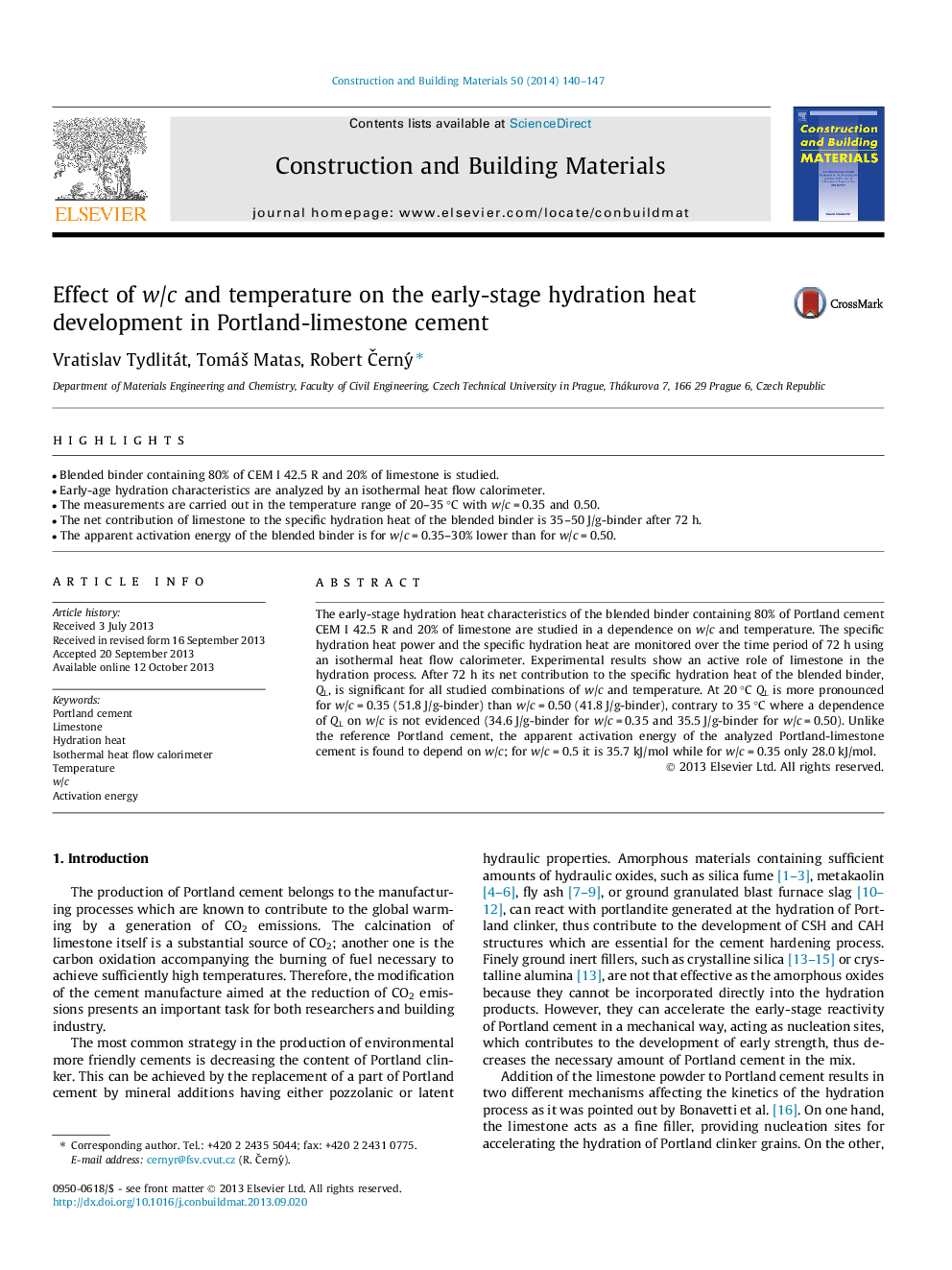| Article ID | Journal | Published Year | Pages | File Type |
|---|---|---|---|---|
| 257868 | Construction and Building Materials | 2014 | 8 Pages |
•Blended binder containing 80% of CEM I 42.5 R and 20% of limestone is studied.•Early-age hydration characteristics are analyzed by an isothermal heat flow calorimeter.•The measurements are carried out in the temperature range of 20–35 °C with w/c = 0.35 and 0.50.•The net contribution of limestone to the specific hydration heat of the blended binder is 35–50 J/g-binder after 72 h.•The apparent activation energy of the blended binder is for w/c = 0.35–30% lower than for w/c = 0.50.
The early-stage hydration heat characteristics of the blended binder containing 80% of Portland cement CEM I 42.5 R and 20% of limestone are studied in a dependence on w/c and temperature. The specific hydration heat power and the specific hydration heat are monitored over the time period of 72 h using an isothermal heat flow calorimeter. Experimental results show an active role of limestone in the hydration process. After 72 h its net contribution to the specific hydration heat of the blended binder, QL, is significant for all studied combinations of w/c and temperature. At 20 °C QL is more pronounced for w/c = 0.35 (51.8 J/g-binder) than w/c = 0.50 (41.8 J/g-binder), contrary to 35 °C where a dependence of QL on w/c is not evidenced (34.6 J/g-binder for w/c = 0.35 and 35.5 J/g-binder for w/c = 0.50). Unlike the reference Portland cement, the apparent activation energy of the analyzed Portland-limestone cement is found to depend on w/c; for w/c = 0.5 it is 35.7 kJ/mol while for w/c = 0.35 only 28.0 kJ/mol.
